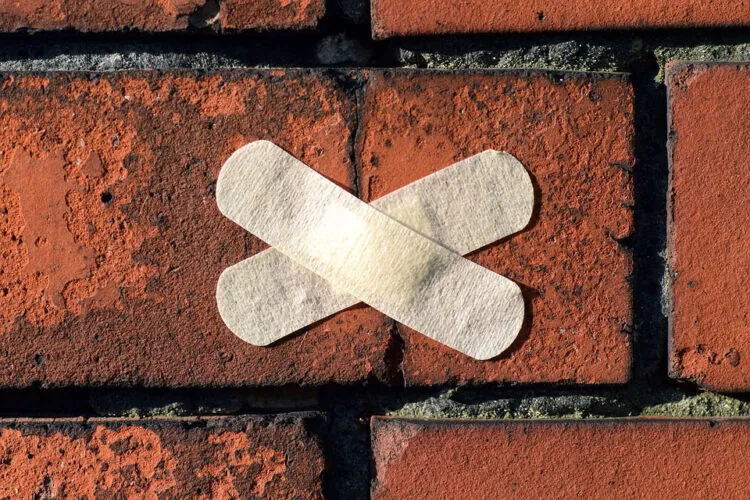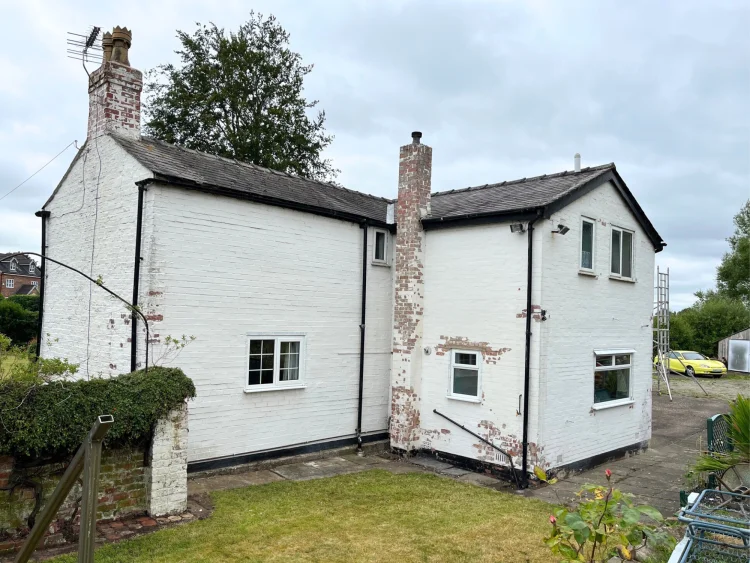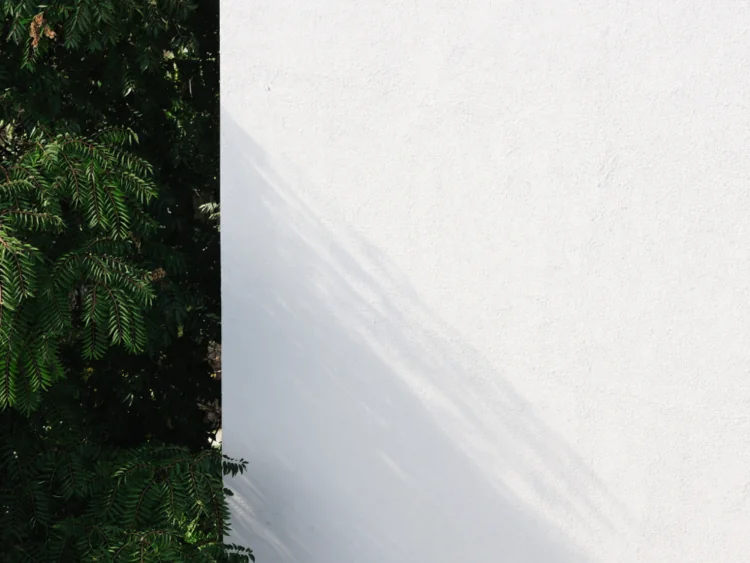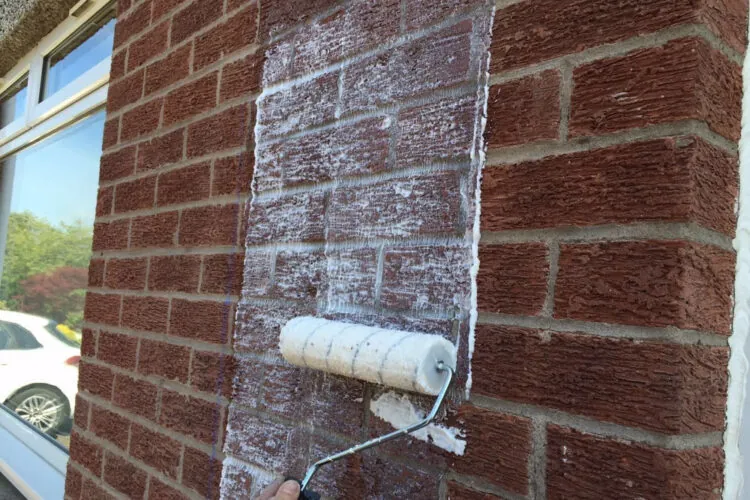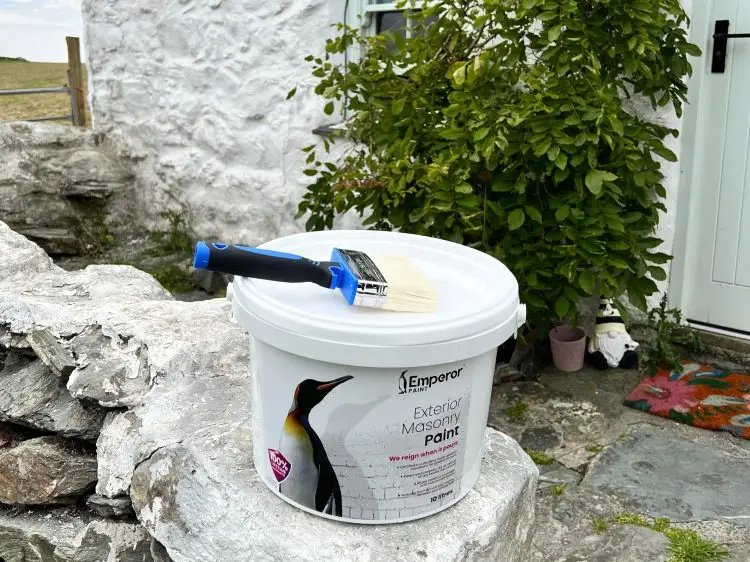Penetrating Damp – The Ultimate Guide
In the UK, we get rain for roughly 159 days of the year according to the Met Office. This combined with an ageing housing stock means that damp is a common problem for many homeowners up and down the country.
In this guide our technical team explains:
- The main types of damp
- What causes penetrating damp
- How penetrating damp can impact your home
- How to prevent penetrating damp coming back
Types Of Damp Explained
Roughly 962,000 to 6.5 million households are affected by damp in England alone and 60% of UK residents report experiencing mould at some point, yet many homeowners are unclear about the different types of damp and what causes them.
There are three common forms of damp; penetrating damp, rising damp and condensation.
What Is Condensation?
Condensation is the most widespread type of damp due to the fact it can occur in any home as it is the product of moisture created inside the house.
It forms when warm, moist air inside the home meets cold surfaces such as windows and walls. The difference in temperature leads the moisture to form water droplets that dampen walls and lead to problems like black mould.
Condensation can generally be managed with proper ventilation and insulation, but will be more common in colder months when surfaces are colder and ventilation is reduced.

What Is Rising Damp?
Rising damp is less common, caused when moisture from the ground level travels up through the exterior walls of a property.
This is caused by a failed or non-existent damp proof course (DPC), which ordinarily prevents the transfer of moisture from the ground into the bottom course of bricks.
Rising damp can be difficult to spot, but if a damp patch starts above the very bottom of the house, it cannot be rising damp.
What Is Penetrating Damp?
Penetrating damp occurs when rainwater enters a property through external walls, roof or windows, causing damp patches inside.
Unlike rising damp, penetrating damp can occur at any level of the building.
This moisture is often absorbed by exterior walls as building materials like brick, contrary to popular belief, are not waterproof. They are porous, meaning they absorb water – a frequent issue in the UK’s wet climate.
| Condensation | Rising Damp | Penetrating Damp | |
|---|---|---|---|
| Source | Interior | Exterior | Exterior |
| Location | Any room, but often kitchens and bathrooms | From ground-level upwards | Any level of external facing walls |
| Cause | Warm, moist indoor air meeting cold surfaces | Moisture rising from the ground due to a failed or missing DPC | Rainwater absorbing through external walls |
| Common Signs | Drip marks, black mould, musty smell | Interior wet patches starting at ground-level, limited signs of damage on external side of walls | Isolated damp patches on walls that join external walls, damage to masonry walls |
| How Common? | Most common | Rare, often overdiagnosed | Common particularly in older homes |
What Causes Penetrating Damp?
While most exterior walls absorb moisture when it rains, this becomes penetrating damp usually in two main scenarios:
- Solid wall construction – without a cavity, water passes from the external wall to the internal wall, resulting in damp.
- Blocked cavities – debris or poorly fitted insulation inside cavity walls can create a bridge that allows moisture to transfer from outside to inside.
How much moisture your walls absorb depends on the material, the condition and the level of exposure to wind and rain. Things like cracks, damaged pointing, overflowing gutters and poorly sealed windows and doors all make it much easier for rain to get into the wall and spread.
What Is The Impact Of Penetrating Damp?
Like all damp problems, penetrating damp gets worse over time if the root cause of the problem is not dealt with. Leaving it untreated puts both your home and your health at risk.
For your home, penetrating damp can:
- Lead to mould and fungal growth that thrives in damp conditions.
- Damage interior plaster, paint and wallpaper.
- Cause damage to the exterior wall like peeling paint, cracks, spalling bricks or crumbly mortar.
- Reduce the energy efficiency of your home – wet walls lose heat quicker than dry walls.
For your health, damp and mould can be equally damaging, with damp and mould estimated to have contributed to approximately 5,000 cases of asthma and 8,500 lower respiratory infections in children and adults in England.
How To Identify Penetrating Damp
We are often asked ‘how do I know if my house has penetrating damp problems?’, to which the answer is relatively straightforward.
There are a number of things that can indicate penetrating damp:
- The presence of dark spots on the exterior wall of your property.
- Salt efflorescence takes the form of a white, powdery substance caused by water ingress.
- Damage to exterior walls, including cracked bricks and crumbling mortar.
- Water marks on interior walls that could cause paint or wallpaper to peel.
- A musty smell inside the home.
Try our handy wall health check to spot issues early and keep your home protected long-term.
How To Prevent Penetrating Damp
Whether you already suffer from damp issues or want to protect your home from the potential of future damage, the solution is the same.
Simply put, you must significantly reduce the moisture levels and limit the ability for moisture to penetrate the exterior walls of a property, then the risk of penetrating damp is significantly reduced.
Check for damage
The first step is to find and fix the sources of the moisture. Start outside your home and check:
- Gutters and downpipes – make sure they aren’t blocked or leaking. Damp patches near gutters often point to a problem.
- Roofline – look for missing or slipped tiles, loose flashing or signs of leaks inside your loft.
- Windows and doors – look for gaps or failing seals where water could get in.
- Exterior walls – check for peeling paint, cracks, crumbling mortar or other areas where water could seep in.
If you spot damage to any of these areas, repairs are needed to stop water ingress.
If you can’t find any obvious signs where water could be entering, this may simply be that the external walls are absorbing rainwater at a higher rate than it can release this moisture.
Learn more: The ultimate guide to water ingress
Reducing water absorption
There are a number of products available that help protect brickwork from the elements, but it’s important to choose the right type.
A lot of the confusion in the UK comes from products known as ‘sealers’. These create a waterproof film that prevents any moisture from entering the brick. While these products seal the outside of brickwork they also seal the inside, trapping moisture and in many cases doing the opposite of what they are designed to do and actually making damp problems worse.
The key is breathability. Walls need to be able to let water vapour escape while still preventing rain entering in the first place. Any treatment for exterior walls must be highly breathable in order to be an effective treatment for penetrating damp.
One modern approach is nano-technology. Unlike a sealer, it doesn’t form a seal on the surface. Instead, it chemically bonds to the wall and lines the pores of the material.
This allows the wall to repel rainwater, while it still allows water vapour to naturally pass through.
Learn more: What is a brick sealer?
This nano-technology comes in two forms; a coloured masonry paint and a clear masonry cream.
Emperor Masonry Paint and Emperor Masonry Creme were tested by a UKAS accredited laboratory who carried out a series of tests. The results of the testing showed that not only did they reduce water ingress by 96% but they also had no adverse impact on the breathability of the brickwork, with an SD value of 0.01 and 0.03.
Both products were also shown to keep bricks 6⁰C warmer than uncoated bricks on average and after 25 years of accelerated weathering showed no deterioration either in performance or aesthetic appearance.
Learn more: How paint can improve your home’s energy efficiency
How Do You Apply The Penetrating Damp Treatments?
The application process of each treatment varies. Emperor Masonry Creme is a one-coat treatment that can be applied using a brush or roller. As it’s completely invisible, it will not alter the appearance of the brickwork or stone it is applied to, making it extremely DIY friendly.
Emperor Masonry Paint is applied in the same way as any masonry paint, using a two-coat process.
It can be applied to bare surfaces when a primer is applied beforehand or applied straight on to pre-painted exterior walls.
When it comes to painting any surface, preparation makes all the difference. Always take time to remove dirt, repair cracks and ensure the wall is dry to achieve lasting results that protect your home against penetrating damp.
Learn more: How to paint exterior walls
Frequently Asked Questions
Will rendering stop penetrating damp?
A traditional sand and cement render will not prevent penetrating damp, nor will it solve existing damp problems.
Bare render will absorb moisture, just like bare brick, stone or cement. If you want to help reduce the risk of penetrating damp, the best solution is to treat exterior walls using a water repellent and breathable treatment.
Does damp cause health problems?
As we have mentioned, according to the NHS, damp can cause a range of health problems, including respiratory infections, allergies or asthma. This is caused by mould spores, putting children, the elderly and those with pre-existing skin or respiratory problems the most at risk.
Does repairing surfaces compromise breathability?
Damp and damage often coincide, meaning repairing surfaces to prevent water ingress is essential.
Some renders and other repair methods can reduce breathability, which as we have discussed can compromise the performance of your walls.
Products like Emperor Textured Basecoat prevent this problem, helping to repair surfaces and create a seamless, blemish-free finish that is also highly breathable.
Can penetrating damp devalue a house?
Yes, damp can devalue a house as it can be a sign of larger problems that will put off potential buyers. Solving any damp problems before selling a house is crucial if you want to maximise your sale price.
If water ingress on exterior walls is the problem, the cost of applying a masonry cream is nothing compared to the money you can lose out on.
Can you sell a house with penetrating damp?
Selling a home that has penetrating damp is not illegal, but it is something you need to disclose under the Property Information Form. Surveyors will flag penetrating damp in their report, which may result in a lower sale price. The reality is the treatment for penetrating damp is much lower than rising damp, meaning it is often advisable to address this ahead of any sale.
CAN YOU PAINT OVER PENETRATING DAMP?
You cannot directly paint over penetrating damp unless the surface is completely dry.
If you repaint interior walls that have been damaged by penetrating damp without fixing the cause, the paint will only last until the next spell of heavy rain.
If you have more questions, we are here to help with our in-house team of experts. You can chat to them by emailing [email protected].
Ready to start? Take our handy quiz to get personalised recommendations and find the right products for your project in a few clicks.
This article was written by the Emperor Technical Team, a group of experts with an average of over 25 years experience in the building industry. They work daily with homeowners, tradespeople and specification professionals to deliver practical, expert guidance that promotes long-term results, supports wall health and helps create homes that are prepared for the future.


